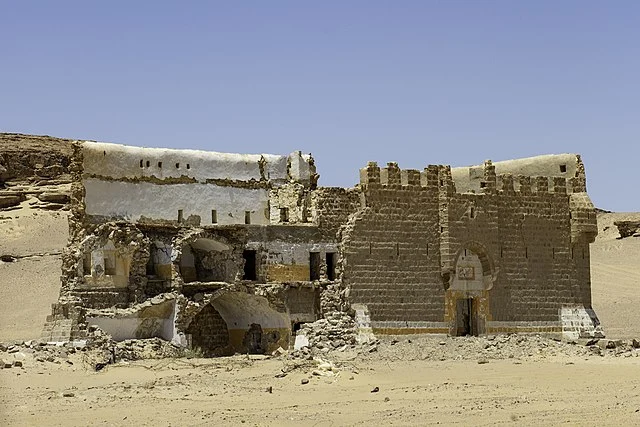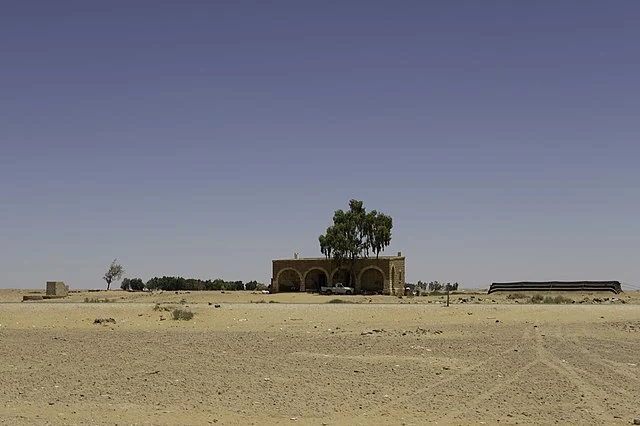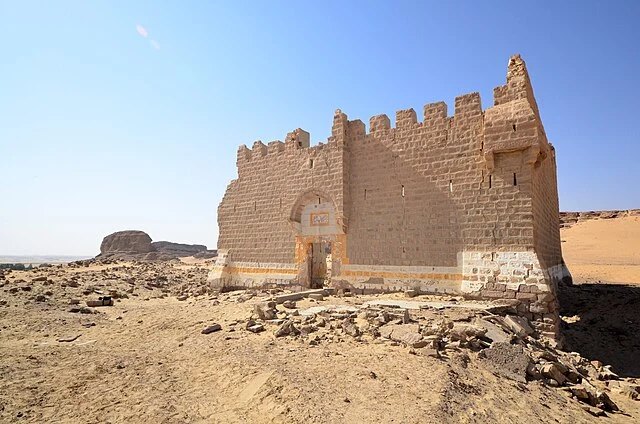Qal’at Mudawwara is a historic fortress located in modern-day Saudi Arabia, near the border with Jordan. The site offers a unique glimpse into the region’s military and architectural history. Its strategic location and historical significance make it an essential subject for study in Middle Eastern archaeology.
Get your dose of History via Email
Historical Context of Qal’at Mudawwara

Qal’at Mudawwara dates back to the early Islamic period, around the 7th century AD. The fortress was built during the Umayyad Caliphate, which ruled from 661 AD to 750 AD. The Umayyads were the first major Islamic dynasty after the death of the Prophet Muhammad in 632 AD.
The fortress served as a military outpost, providing control over trade routes and protecting the empire’s frontiers. Its location near the Hijaz region, a crucial area in early Islamic history, further highlights its importance.
Architectural Features of Qal’at Mudawwara

The fortress’s architecture reflects typical early Islamic military design. Built primarily from stone, Qal’at Mudawwara features thick walls and defensive towers. The structure is rectangular, which was common for fortresses of this period.
The main entrance is fortified, designed to resist enemy attacks. Inside, the fortress contains living quarters, storage rooms, and a central courtyard. The design shows a blend of Roman and Persian influences, common in early Islamic architecture.
Strategic Importance
Qal’at Mudawwara was strategically important for several reasons. First, its location allowed control over vital trade routes connecting the Arabian Peninsula with the Levant. This was crucial for the Umayyad Caliphate, as it enabled the safe passage of goods, people, and military forces.
Second, the fortress acted as a defensive outpost against potential threats from the north. The region was prone to incursions, making fortified sites like Qal’at Mudawwara necessary for the security of the empire.
Finally, the site served as a checkpoint, where taxes could be collected from traders passing through the area. This contributed to the economic strength of the Umayyad state.
Archaeological Discoveries
Archaeological excavations at Qal’at Mudawwara have revealed significant finds. These include pottery, inscriptions, and remnants of weaponry. The pottery is typical of the early Islamic period, with simple designs and minimal decoration. Inscriptions found at the site are in Arabic, offering insights into the administrative functions of the fortress.
The weaponry, including arrowheads and swords, suggests that the fortress was prepared for conflict. These artifacts provide valuable information about the military capabilities of the Umayyad Caliphate.
Current State and Preservation
Today, Qal’at Mudawwara stands as a historical monument. The site is relatively well-preserved, although exposure to the elements has caused some damage. Saudi Arabia has recognized the importance of the site, leading to efforts to preserve it for future generations.
Preservation efforts focus on maintaining the structural integrity of the fortress. Additionally, there is ongoing research aimed at better understanding the site’s history and significance.
Conclusion
Qal’at Mudawwara is a significant site in the study of early Islamic military architecture. Its strategic location, historical context, and architectural features provide valuable insights into the Umayyad Caliphate’s military and economic strategies. Ongoing archaeological research and preservation efforts ensure that Qal’at Mudawwara will continue to be an important subject of study for historians and archaeologists.
This fortress is not only a testament to the military prowess of the Umayyad Caliphate but also a crucial link in understanding the broader history of the early Islamic world.
Source:

